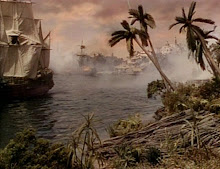Burkard Meltzer on If tomorrow never comes for Frieze


Some months ago, Freymond-Guth & Co Fine Arts moved into a former car repair shop. Aside from the narrow window across the large doors, the two exhibition spaces offer a retreat from the bustle of the surrounding neighbourhood. For the solo exhibition and one-work show by Christodoulos Panayiotou, part of the gallery gained a slide-projected view out into an unexpectedly Neapolitan night. Only the projector’s rhythmical clicking briefly interrupts the glare of the photographs of firework displays gathered from the archives of two Naples daily newspapers for the slideshow If Tomorrow Never Comes (2007). It should be noted that the occasions for these photographs may not always have been happy ones, since fireworks are used in Naples both for popular festivals and by the Camorra to transmit sensitive messages.
Although the photographs date back to the early 20th century, historical orientation during the slideshow is near impossible. As both newspapers print their pictures in black and white, even today, the firework displays are reduced to a range of greys and appear almost interchangeable – even if the various motifs span an entire century. This difficulty of historical orientation allows the work to awaken paradoxical hopes. What was once captured on film as news and then apparently vanished forever is brought to light again – if only for a few seconds – in the projector’s endless loop. Removed from the context of day-to-day reporting, isolated from any text, the pictures now stand out from the background. A simple trick, but one which in Panayiotou’s work creates a distinctive sense of time, which seems to expand again and again during the viewing process.
In many cases, the press photographer’s camera is pointed out over the sea, which amplifies every effect of the light during the firework display like a huge mirror. The bundles of light spread out like rays above the water and briefly illuminate the Gulf of Naples with its boats and promenades. Sometimes, historical buildings, lampposts or a shoreline make their way into the foreground. Brightly lit by a powerful flash, trees and bushes are starkly outlined against the night horizon. As a result of the peculiarities of photographic imaging, various light sources merge with the haze of burning gas from the fireworks. And the long exposure carefully archives the arcs described by the rockets. Only in photography can visual traces from a given time-lapse be visualized together in a single image.
The spectacular light events almost transform the mechanical re-presentation of a slideshow into a performative act that permanently reverses the camera’s recording process: instead of capturing light waves, a firework display becomes visible on the gallery wall with a click from the projector. For a moment there is darkness, and then the next bright rocket trace lights up the here and now – thanks to an event that was recorded during a brief time-span several decades ago and then archived. Whether using photographs, sound recordings or video installations, Panayiotou’s works perform an exchange between the act of recording and the act of showing that is capable of developing a time structure all of its own.
Translated by Nicholas Grindell
Burkhard Meltzer

No comments:
Post a Comment